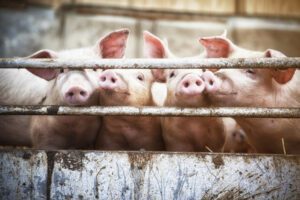 It is both interesting and refreshing to look at the field of regenerative medicine from the perspective of biomechanical engineering research, rather than the standard cellular and biological aspects.
It is both interesting and refreshing to look at the field of regenerative medicine from the perspective of biomechanical engineering research, rather than the standard cellular and biological aspects.
Regenerative medicine is a very exciting field of study, and the porcine lends itself very well to this type of research. That’s because – as we have pointed out before – of the biological similarities between pigs and humans.
How Porcine Tissue Aids Regenerative Medicine Research
Among that research is a study looking at the biomechanical properties of the spinal cord, conducted at the University College of London.
“Spinal cord injury is a severely debilitating condition which can leave individuals paralyzed and suffering from autonomic dysfunction,” the study’s authors write in the October issue of the journal Regenerative Medicine. “Regenerative medicine may offer a promising solution to this problem.”
They write that past research focused mainly on exploring the spinal cord’s cellular and biological aspects. The biomechanical properties of spinal tissue are an area that remains relatively unexplored. Porcine tissue played a role in their studies.
Understanding these properties is important, because many regenerative strategies seek to deliver cells and materials through tissue-engineered therapies. The researchers in this study reviewed the pertinent biomechanical properties of spinal cord tissue, and offered the baseline knowledge necessary to apply these concepts to spinal cord tissue engineering.
In the past, we’ve reported on similar research using porcine models, including their use in studying dermal burn healing and organ transplants.
Animal Biotech has spent more than 20 years helping promote this sort of research, providing biomedical professionals with post-mortem porcine tissues and organs. Contact us today to find out how we can assist you in your next endeavor.


